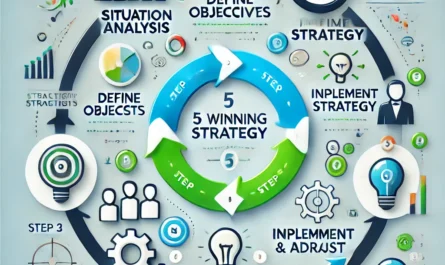What is Competitive Analysis?
Competitive analysis is a process where businesses systematically study their competitors to gain insights into their strengths, weaknesses, and strategies. This analysis helps organizations understand where they stand relative to others in the same industry and identify opportunities to outshine the competition. Competitive analysis involves evaluating aspects such as market positioning, product or service offerings, marketing strategies, pricing models, and overall brand reputation. By doing so, businesses can make informed decisions that guide their growth and expansion plans.
Whether you are a startup or an established player, competitive analysis is indispensable for refining business tactics. It doesn’t just provide insight into what your competitors are doing, but also reveals emerging trends, customer expectations, and shifts in the market landscape that could affect your future strategies.
Why is Competitive Analysis Important for Gaining Market Share?
For any business looking to expand its market footprint, gaining market share requires a nuanced understanding of the competition. Competitive analysis serves as a roadmap, allowing companies to discover what competitors are doing well, where they fall short, and how those insights can be translated into actionable opportunities.
By constantly evaluating competitors, businesses can:
- Understand market dynamics and anticipate changes.
- Identify new opportunities for product or service innovation.
- Optimize pricing and marketing strategies.
- Strengthen their competitive advantage through differentiation.
- Adapt to consumer behavior shifts faster than rivals.
An ongoing competitive analysis program ensures that your company is always a step ahead, capable of defending its market position while finding new growth avenues.
Understanding the Market Environment
Before diving into competitor specifics, it is crucial to understand the broader market environment in which your business operates. Market analysis should include studying industry trends, consumer demands, and economic factors that influence both your business and your competitors. Analyzing the market environment allows you to better understand the forces that shape customer behavior and purchasing decisions.
Tools such as PEST analysis (Political, Economic, Social, Technological) can help identify external factors that may affect the competitive landscape. Similarly, studying market segments gives you a more targeted view of which demographics your competitors are focusing on, revealing untapped opportunities or underserved customer groups.
Identifying Direct and Indirect Competitors
An effective competitive analysis requires identifying both direct and indirect competitors. Direct competitors are those that offer similar products or services and target the same customer base. These businesses are often your primary focus, as they are likely to share the same market share goals. Indirect competitors, on the other hand, may offer substitute products or services that fulfill the same customer needs but through different means.
By identifying both types of competitors, you can develop a holistic view of the competitive landscape. This allows you to not only benchmark your performance against industry peers but also identify potential threats from businesses outside your immediate market segment.
Collecting Competitive Intelligence
Competitive intelligence is the data and information you collect about your competitors. Gathering this intelligence is a continuous process that involves tracking various aspects of competitor behavior, such as:
- Product launches and updates
- Changes in pricing
- Marketing campaigns
- Customer reviews and feedback
- Financial performance and market positioning
Sources of competitive intelligence can include industry reports, social media monitoring, customer surveys, competitor websites, and publicly available financial data. Leveraging this data effectively enables you to spot trends and react swiftly to shifts in the competitive landscape.
Key Metrics to Analyze in Competitor Evaluation
When evaluating competitors, certain metrics provide valuable insight into their performance and strategy. These include:
- Market share: What percentage of the market does each competitor control?
- Revenue and profitability: How financially healthy is each competitor?
- Product quality and innovation: How do competitor products or services compare in terms of quality and innovation?
- Customer satisfaction and loyalty: How loyal are their customers, and how satisfied are they with the products or services?
- Brand perception: What is the general perception of the competitor’s brand in the market?
By focusing on these metrics, you can assess your competitors’ overall business health and strategic direction.
Using SWOT Analysis for Competitor Insights
SWOT analysis (Strengths, Weaknesses, Opportunities, Threats) is a powerful tool for understanding competitors on a deeper level. By conducting a SWOT analysis on your competitors, you can uncover insights into their internal strengths and weaknesses as well as external opportunities and threats in the marketplace.
For instance, you may find that a competitor has strong brand loyalty but is struggling with innovation. This opens up an opportunity for your business to introduce innovative solutions that attract a portion of their customer base. Conversely, recognizing your competitors’ strengths can help you reinforce your own strategies to maintain or improve your position.
Identifying Market Gaps through Competitive Analysis
Market gaps are opportunities in the marketplace where customer needs are not fully met by existing products or services. Through competitive analysis, you can uncover these gaps by examining areas where your competitors are underperforming or where there is a lack of offerings tailored to specific customer segments.
For example, if your competitor’s product lacks certain features that customers desire, you can capitalize on that gap by enhancing your product to meet those needs. Similarly, analyzing competitors’ customer reviews can reveal recurring pain points that you can address with your offerings.
You Can Also Read : How to Adapt Your Business Strategy to Changing Market Trends
Tracking Competitor Product and Service Offerings
Keeping tabs on the products and services offered by competitors is crucial for staying relevant. By analyzing their product portfolio, you can identify potential areas of improvement for your own offerings. Competitor product analysis involves studying the features, benefits, and overall positioning of competitor products. Do they offer something unique? Are there areas where they are lacking?
This analysis allows you to benchmark your products against the competition and ensure that your offerings meet or exceed market expectations.



